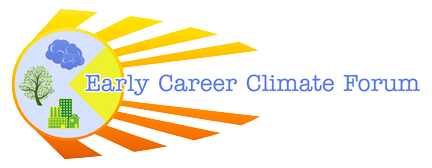Analyzing and Communicating Extreme Climate Risk
Public opinion and scientific consensus are not always on the same page. For example, the theory of heliocentrism (the Earth revolving around the Sun) was first proposed by Greek theorists 2,500 years ago and later confirmed by Nicolaus Copernicus, Johannes Kepler, Galileo Galilei, and Isaac Newton in the 16th and 17th centuries, but not widely accepted by the church, and ultimately the public, until the 1820s. Today’s “heliocentrism” is climate change, especially the predictions of frequency and intensity changes in extreme weather events. In short, burning fossil fuels increases atmospheric carbon dioxide levels, which in turn increases the capture and holding capacity of the heat Earth receives from the Sun, thus increasing global temperatures. Temperature changes cascade onto weather events, especially with regard to tropical cyclones and intense rainfalls where high temperatures can increase the amount of water and energy in the atmosphere. We term these “extreme events” because they occur relatively rarely and have large effects both spatially and temporally.
I study “return periods” of extreme weather events—how often an event can be expected to happen on average. For example, my home state of Louisiana gets hurricanes approximately once every decade on average. I am in my third decade of life and have experienced three memorable hurricanes. In 1992, I dropped a can of soup on my foot in the dark while power to my home was out during Hurricane Andrew. In 2005, my high school was flooded with students from New Orleans following Hurricane Katrina. In 2012, I had moved away from my childhood home, only to return during the aftermath of Hurricane Isaac’s devastation. Most recently, my hometown was inundated by as much as 30 inches of rain in August 2016. Instead of hiding in my home as I had before, I joined our state climatologist in photo-documenting the storm.
 Images from recent flooding: The yardboat. Photo: C. Tucker
Images from recent flooding: The yardboat. Photo: C. TuckerThis last event was called “The Storm with No Name” because of its hurricane-like precipitation. In part, this lack of a name led the public astray, because people often believe that only a large, named storm can do any real damage. On the contrary, hundreds of thousands of people were displaced by flood waters, billions of dollars of damage were estimated to private and public land, and more than a dozen people perished in the storm (USGS Report, p. 23). To display the magnitude of the event, rainfall estimates were given a 1 in 1000 chance of happening each year, and to describe the event it was colloquially termed a “1000-year event” – which sounds like something that only happens once in 1,000 years. Though this is true in some ways (river gauges did reach thousand-year return period levels), the historic record of floods in Baton Rouge tells an interesting story: similar parishes in Louisiana have received notice and even federal funding from past floods in 1953, 1967, 1983, 1990, and 2001. When describing a return period of 1000 years, what scientists actually mean is that the event has a very small chance of happening in any given year. But most people hear “1000-year flood” and think, “This won’t happen again for another 999 years,” when in fact the event could happen again next year (or the year after)!
Through my experiences here on the Gulf Coast, I find that memories of extreme weather can fade through time. We remember these events, but not for their destructive nature. Instead, we remember these events because of how resilient and strong we were during and after them. Recognizing our resilience is important, but it must not blind us from the fact that extreme weather events can and will happen in the future, and that we must be prepared for them. If a house is built in a floodplain, it should be raised or leveed to prevent inundation, or at the very least have flood insurance that protects both the house itself and the contents within. Large trees should not be planted directly adjacent to houses and powerlines; Hurricane Katrina damage in my Baton Rouge neighborhood was largely due to downed trees and limbs. Finally, neighborly help goes a long way. Federal emergency managers can be overly taxed during extreme weather events. During the flood last year in Louisiana, a huge force of local, responsible boat-owners led by local police rescued thousands of people from their flooded homes. They are now known as the “Cajun Navy” for their brave efforts, and their boats could be seen on dry grass for weeks after the storm as a reminder of the magnitude of the flood.
Historical documents prove that extreme weather has happened in the past. Extreme events analysis shows that these events can and will continue to occur. Our own memories remind us that we have experienced the power of atmospheric activity. It seems that historical documents, climate science, and public perception are matched here. Maybe that provides an opening for greater public engagement with the broader issue of climate change. That would be great, because stronger collaboration and shared understanding of the world between scientists and the public makes for a more prepared society.
NOTE: Comments will be visible to the public. Before commenting for the first time, please review the ECCF's Editorial Policy.


 Clay Tucker
Clay Tucker
Add comment